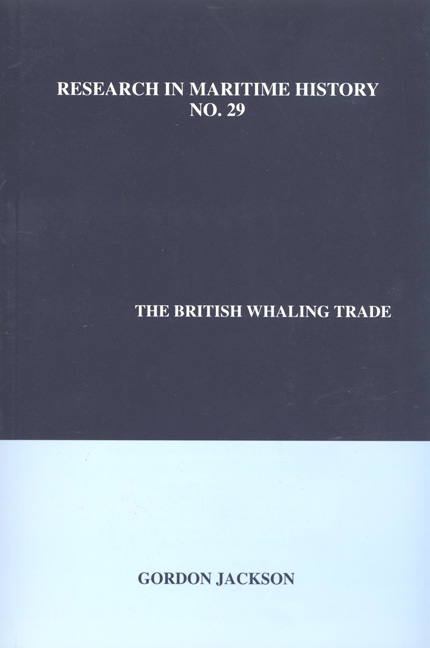Book contents
- Frontmatter
- Dedication
- Contents
- List of Tables in the Text
- List of Appendices
- New Introduction
- Preface
- Part One The Traditional Whaling Trades, 1604-1914
- Part Two The Modern Whaling Trade, 1904-1963
- Chapter 9 New Whaling Techniques
- Chapter 10 New Whaling Areas
- Chapter 11 Advances in Oil Technology
- Chapter 12 Expanding Fleets and the New Fishing Grounds, 1919-1920
- Chapter 13 Crisis and Contraction, 1929-1932
- Chapter 14 Regulated Recklessness, 1932-1939
- Chapter 15 The Final Fling, 1945-1963
- Conclusion
- Appendices
- Select Bibliography
- Additional Bibliography
- Index
Chapter 14 - Regulated Recklessness, 1932-1939
from Part Two - The Modern Whaling Trade, 1904-1963
- Frontmatter
- Dedication
- Contents
- List of Tables in the Text
- List of Appendices
- New Introduction
- Preface
- Part One The Traditional Whaling Trades, 1604-1914
- Part Two The Modern Whaling Trade, 1904-1963
- Chapter 9 New Whaling Techniques
- Chapter 10 New Whaling Areas
- Chapter 11 Advances in Oil Technology
- Chapter 12 Expanding Fleets and the New Fishing Grounds, 1919-1920
- Chapter 13 Crisis and Contraction, 1929-1932
- Chapter 14 Regulated Recklessness, 1932-1939
- Chapter 15 The Final Fling, 1945-1963
- Conclusion
- Appendices
- Select Bibliography
- Additional Bibliography
- Index
Summary
The great slump of 1929-1931 may have aggravated the difficulties in the whaling trade, but it did not cause them. They sprang, rather, from a reckless investment in relatively cheap shipping which produced too much oil and killed too many whales. The ships could be laid up and the investment written off, but only slowly did it dawn upon consumers and producers alike that the whales could not be replaced. Whales are not a wasting resource like coal or mineral oil; given sensible exploitation they would reproduce themselves for ever. But exploitation was not sensible and whales were being wasted. They were slaughtered in unprecedented numbers less because the additional oil was needed, than because additional ships went out to take them; and competition that was ruinous for whalermen was equally ruinous for whales!
It was a difficult problem to discuss because nobody knew much about whales. Research initiated in the 1920s by the Discovery Committee of the Colonial Office and by various Norwegian agencies was beginning to reveal unwelcome indications that the perennial problem of over-fishing was entering its final stage as pelagic whalers covered the whole of the Antarctic, and Sir Sidney Harmer, a prominent cetologist, had appealed in 1925 for “a rational system of regulating the industry.” Nevertheless, when Lever Brothers’ board discussed the possible effects of pelagic whaling in 1928 it was reported that “the view held in all well-informed quarters was there was no likelihood of a shortage of whales generally.“
In the following year there was said to be no probability of extinction, but by the early 1930s scientists were no longer so confident. There appeared to be no more unexplored fishing grounds and no more species of whales in reserve as there had always been in the past. (This prognostication was later proved false: there was still a huge stock of sei and sperm whales in warm waters, and these formed the basis for the final phase of whaling). Mackintosh and Wheeler, in their Discovery Report on the Southern blue and fin whales, had investigated migration and feeding patterns because “with a knowledge of these processes it is possible to say in what circumstances hunting is liable to do the most damage, and to judge the general ability of the stock of whales to withstand or recuperate from the effects of hunting on a large scale.“
- Type
- Chapter
- Information
- The British Whaling Trade , pp. 193 - 210Publisher: Liverpool University PressPrint publication year: 2004



